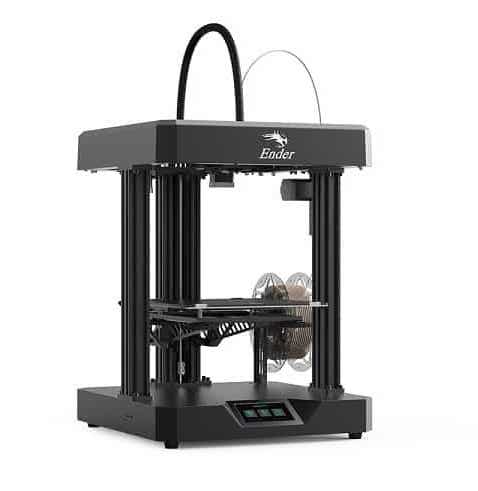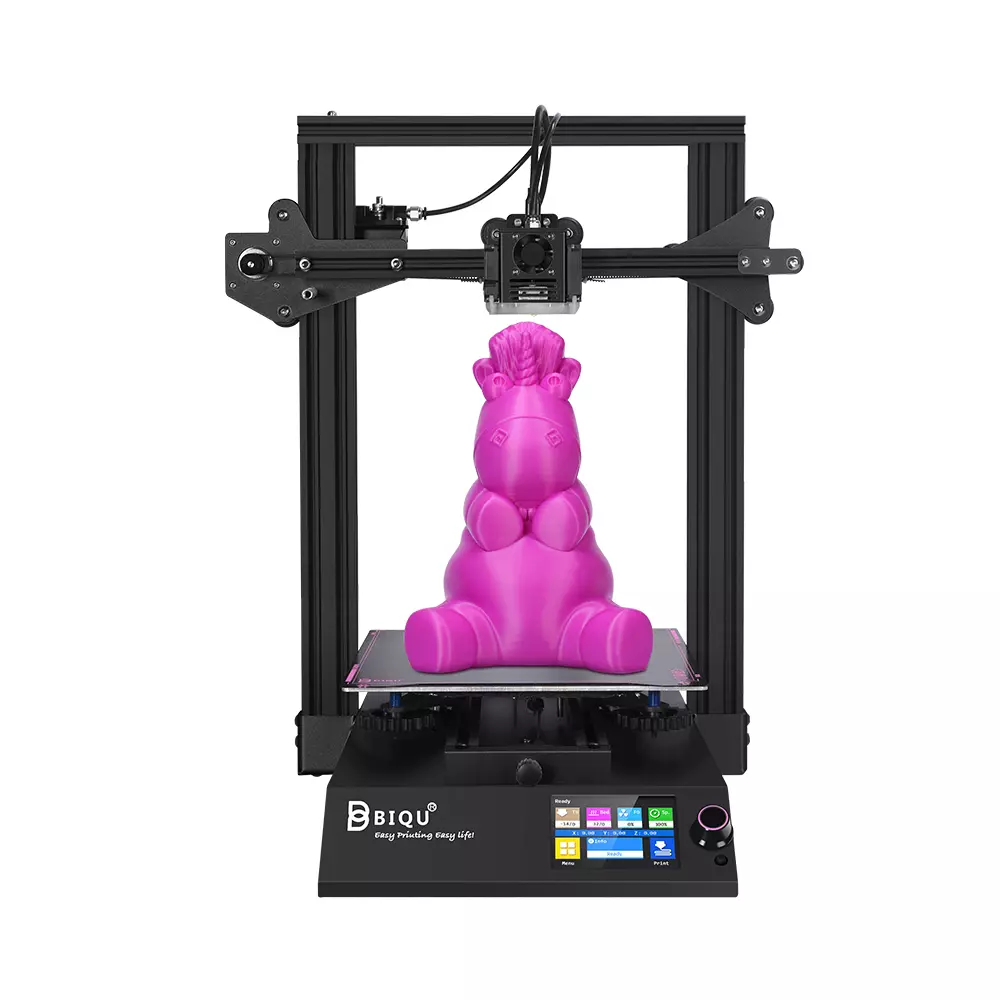Compare Ender 7 vs BIQU B1
Comparison between the best 3D printers
Choose the best 3D printer at the best price. The cheapest 3D printers are here.
Buy a 3D printer here with 3D Fila.
 |
 |
|
| Model | Ender 7[BUY Ender 7] |
BIQU B1 |
| Printing Material | Filament | Filament |
| Buy Filament for Creality 3D Ender 7 | Buy Filament forBigTreeTech BIQU B1 | |
| Estimated price | $429,00 | $269,00 |
| Manufacturer | Creality 3D | BigTreeTech |
| Release Year | 2021 | 2020 |
| Print Volume [mm] | 250x250x300 | 235x235x270 |
| Printer Size [mm] | 430x460x570 | 412x402x492 |
| Weight [kg] | 17,2 | 8,00 |
| Power Loss Recovery | YES | YES |
| Enclosed printer | NO | NO |
| Bed Leveling | Manual | Manual |
| Filament End Sensor | YES | YES |
| Bed type | Heated | Heated |
| Power supply system | Bowden | Bowden |
| Standard nozzle | 0,4 | 0,4 |
| Maximum Nozzle Temperature [°C] | 260 | 250 |
| Maximum Bed Temperature [°C] | 100 | 100 |
| Maximum printing speed [mm/s] | 250 | 100 |
| Filament holder | YES | YES |
| Camera for supervision | NO | NO |
| Recommended filaments | PLA, PETG, Tritan, Flex, ABS | PLA, TPU, ABS, PETG |
| Recommended slicers | Cura, Simplify, Slic3r, IdeaMaker | Cura, Simplify, Slic3r |
| Maximum Resolution [mm] | 0,1 | 0,1 |
| Processor | Creality CR-FDM V.2.4.S1_V101 32bits | 32 Bits BTT SKR V 1.4 |
| Display | Display touchscreen 4,3'' | Touchscreen TFT 3,5'' |
| Power Supply | 110/220V / 350W | 24V / 360W |
| Connectivity | SD / USB | SD / USB |
| Operating systems | Windows, Mac, Linux | Windows, Mac, Linux |
| Date of registration in the system | 2022-11-04 | 2021-04-14 |
| Release date | 2021 | 2020 |
| Extra features | Crealitys Ender 7 printer offers remarkable print speeds, utilizing CoreXY kinematics for precise and fast movement. With a 250x250x300mm build area, dual direct extruder, and custom hotend, the Ender 7 is capable of printing at high speeds, although quality may suffer on smaller prints. Assembly is relatively straightforward, but the machine is noisy and can get hot. Its true speed potential is most noticeable on larger prints, where it outperforms its competitors. | The BIQU B1 is an advanced 3D printer with a silent 32-bit BTT SKR V1.4 motherboard and ARM Cortex-M3 CPU, offering DIY interfaces (I2C, SPI, WiFi) and dual Z-axis. Its dual BTT B1 TFT35 V3.0 operating system allows real-time monitoring and multiple printing modes, including G-code visualization effects. It stands out for its BIQU SSS (Super Spring Steel), ensuring easy model adhesion and simplified removal, with the possibility of using it on both sides. It includes a filament sensor, automatically pausing printing in case of filament breakage. The multicolored RGB lights integrated into the hotend allow you to view the printing status even at night. Additional notes include the need for a BIQU-specific Type-C cable and extra interfaces for smart filament sensor and BL Touch. |
| Support for multiple colors and materials (AMS and CFS) | NO | NO |
Notes * |
||
| Cost-benefit | 7 / 10 | 7 / 10 |
| Hardware | 2.4 / 10 | 2 / 10 |
| Tela | . | . |
| Print volume | 4 / 10 | 3 / 10 |
| Performance | 2 / 10 | 1 / 10 |
| [BUY Ender 7] |
Conclusion |
| In conclusion, both the Creality Ender 7 and the BIQU B1 are solid choices for 3D printing enthusiasts, each offering distinct advantages depending on user needs and preferences. The Ender 7, with its larger print volume and impressive maximum printing speed, is particularly suited for users who prioritize efficiency and volume in their projects. Its CoreXY kinematics system allows for swift printing while maintaining a decent level of quality, making it ideal for larger models. However, it should be noted that the printer can be somewhat noisy, and care may be needed during assembly due to the heat generated during operation. On the other hand, the BIQU B1 distinguishes itself with its innovative features such as real-time monitoring, a silent motherboard, and advanced adhesion technology, which can enhance the overall user experience. This model may appeal more to users who value ease of use and advanced functionality over sheer speed and volume, as its lower maximum printing speed may result in longer print times. When considering price, the BIQU B1 comes at a more economical rate, making it an attractive option for those on a budget or just starting in the world of 3D printing. Conversely, the Ender 7 may justify its higher cost through its enhanced capabilities for larger-scale projects. Ultimately, the choice between these two printers will depend on individual needs: if speed and print area are priorities, the Ender 7 stands out, while the BIQU B1 may be the go-to for those seeking innovative features and budget-friendliness. Each model offers a satisfactory cost-benefit ratio, making either a commendable option for diverse printing tasks. |

